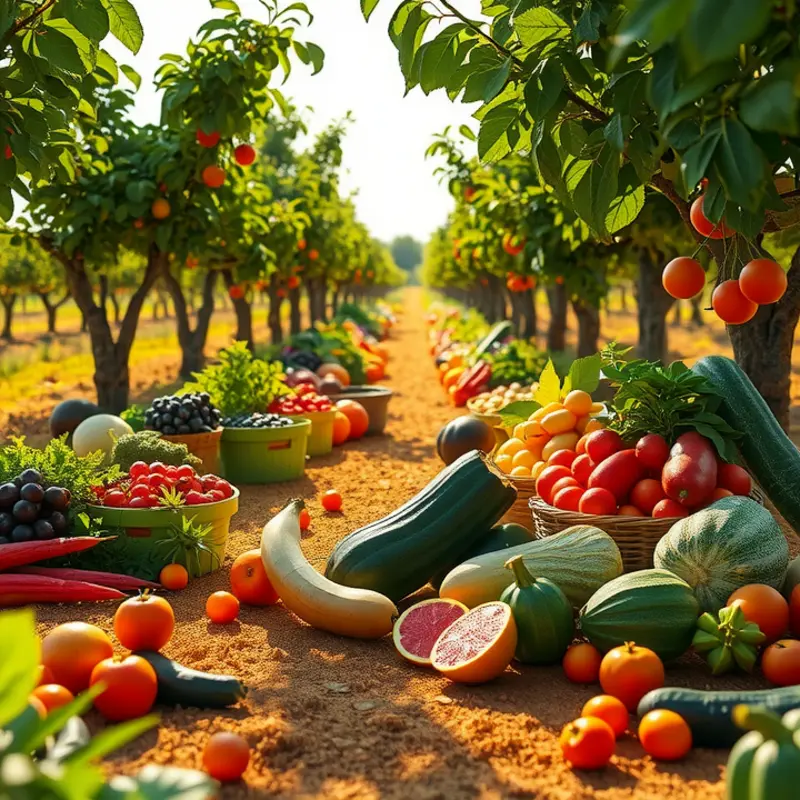Meal prepping is an effective way to simplify meals for busy individuals and families. By preparing in advance, you can ensure that nutritious meals are always ready, reducing the chaos of weeknight dinners and enabling more quality time with loved ones. In this guide, discover easy-to-implement strategies for organizing meals for large groups, focusing on efficiency, variety, and sustainability.
Streamline Your Grocery List and Planning

Effective meal prep starts with thorough planning and a well-organized grocery list. A master grocery list forms the backbone of efficient meal prep, making your shopping spree both time-effective and comprehensive.
Begin by drafting a master grocery list that accounts for all the basic categories. This should include staples like grains, proteins, vegetables, fruits, dairy or alternatives, and pantry essentials. Consider using a digital tool or app to maintain this list, allowing for easy updates and sharing. By categorizing your list, you ensure nothing is overlooked and shopping is a breeze.
Planning meals for large groups necessitates versatility. Select ingredients that can easily adjust to larger servings without altering their flavor dynamics. Grains such as rice, quinoa, or pasta can serve as the base for numerous dishes and can be effortlessly scaled up. Proteins like chicken, lentils, or beans provide hearty options that can stretch over multiple meals.
Versatile ingredients are key to maintaining a streamlined approach. Vegetables such as bell peppers, spinach, and carrots can be used in a variety of cuisines and cooking methods. They effortlessly transition from stir-fry to soup to salads. Learn to leverage these adaptable ingredients to cut down on the variety you need to purchase and store.
To further simplify your process, build a collection of adaptable recipes and create rotations that minimize decision fatigue. For instance, a batch of chili one week can transform into burrito fillings or a hearty soup the following week. Planning this way not only saves time but also keeps meals exciting without straying from familiar ingredients.
Include time-saving staples and shortcuts in your list. Pre-chopped vegetables, frozen fruit, and canned beans are lifesavers when time is scarce. These items reduce prep time while still delivering nutritional value. Strategically use the freezer and pantry to store these ingredients for long-term use and instant access during busy periods.
Lastly, try incorporating batch cooking strategies by preparing elements that can feature across your meal plan. Cook a large batch of grains or roast a variety of vegetables that can be used throughout the week in different dishes. By planning ahead, your meals will become both more efficient and less stressful.
For a deeper dive into maintaining an efficient kitchen, you may find this guide on practical ingredient batching useful. It explores tactics to simplify meal components across multiple dishes.
Remember, effective meal planning is all about consistency and making small adjustments that lead to significant changes. By adhering to these strategies, feeding large groups becomes more manageable and enjoyable.
Batch Cooking Basics: Techniques for Success

Batch cooking transforms meal prep into a streamlined process, perfect for feeding large groups or families. Start with versatile recipes that offer flexibility in ingredients and preparations. Soups, stews, casseroles, and rice dishes are excellent starting points due to their ease of scaling up in volume.
When tackling grains, choose options like brown rice, quinoa, or whole-wheat pasta. Cook these in bulk by doubling or tripling the amount needed. Once cooked, divide into portions and store in airtight containers. This ensures they remain fresh, ready to be paired with different meals throughout the week. Grains can be stored in the refrigerator for up to five days or frozen for long-term storage. Reheat with a splash of water to restore moisture and prevent drying.
Proteins are the backbone of satisfying meals. Opt for lean cuts that cook well in large batches, such as chicken breasts, ground turkey, or firm tofu. Roasting or grilling them at the beginning of the week provides ready-to-go options that can be quickly reheated or repurposed into salads, wraps, or stir-fries. Store cooked proteins in sealed containers in the fridge. Ensure protein safety and quality by following basic storage guidelines, which can be further explored at Safe Storage of Sauces.
Vegetables add color, nutrition, and variety to any dish. Select a variety of seasonal vegetables and roast or steam them in large panfuls. These can be mixed and matched with your grains and proteins, creating a range of meal options with minimal effort. Store them in the fridge for the week’s use or freeze for longer storage. Keep in mind that some vegetables, like leafy greens, may not freeze as well, whereas sturdier vegetables, such as carrots or broccoli, maintain their structure when frozen.
To keep meals exciting without excessive sodium, consider different flavor profiles. Use herbs, spices, or citrus to enliven your dishes, adding depth without relying on salt. For tips on boosting flavors while minimizing salt, refer to the resource on Flavor Boosters Without Salt.
Balanced meal prep doesn’t just save time but also ensures nutrition. Aim for meals that provide a combination of macronutrients—carbohydrates, proteins, and fats—and ensure the inclusion of vegetables with every portion. This approach aligns with nutritional guidelines and maintains a variety of vitamins and minerals essential for well-being.
Whether you are new to batch cooking or refining your technique, embrace these strategies to create seamless and stress-free meal prep. With thoughtful planning and versatile recipes, you can make the most of your time in the kitchen, providing delicious and balanced meals for your family.
Final words
Implementing efficient meal prep strategies can significantly simplify your family’s dining routine. With a well-planned grocery list and effective batch cooking techniques, you can save time while ensuring your meals are healthy and enjoyable. Remember, the key is consistency—set aside time each week to prep, and soon it will become a seamless part of your routine. By making meal prep a priority, you’ll create more opportunities for relaxation and family bonding, transforming the way you approach meal times.







